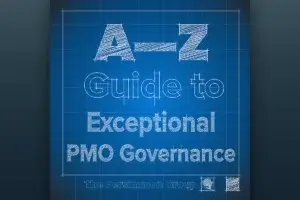How to Repair a Troubled Stakeholder Relationship
Strained relationships can have a devastating impact on your work, to say nothing of the toll they can take on your personal well-being and satisfaction at work. That said, it’s perfectly normal to find yourself faced with a broken or strained relationship at some point in your career. The ability to repair a damaged relationship is a critical (if underrated) skill. Unfortunately, too few people understand or routinely practice the strategies needed to rehabilitate a difficult relationship.
If you find yourself in this situation, follow these essential steps to find your way back to peace—even if the causes of the relationship fracture are deeply seeded.
Seven Steps to Repairing a Business Relationship
1. Consciously step out of judgment.
The day-to-day strain of a troubled relationship can erode our ability to be objective. Faced with constant, low-grade emotional stress, many people find themselves devolving into a place of judgment and frustration. Some people turn this frustration toward themselves (“How did I let this happen?”). Others fall into a pattern of blaming the other person. Most people do both.
When we’re in a mental space of judgment, it’s nearly impossible to approach the relationship productively. If you want to rehabilitate the relationship, start by making an agreement with yourself to let go of your preconceived ideas and feelings.
2. Experience the relationship from a new point of view.
You already know your side of the story. Now it’s time to get in touch with the other side. Here’s a 15-minute thought experiment for you to try. It will help you better understand the root causes of the relationship fissure so that you can identify the strategies needed to get the connection back on track.
Write the story of your relationship with the difficult stakeholder—but from the other person’s perspective. Consider:
- How did the relationship start? When did you first meet?
- What were their likely first impressions of you?
- What were your early frustrations?
- How were those frustrations reinforced over time?
- What do you fear or feel threatened by now?
Once you’re done, read the story and circle any assumptions you’re making about the other person’s motives and beliefs. What evidence do you have to assume these motivations? Does any evidence exist to invalidate or disprove these assumptions?
3. Document current state behaviors.
Next, document the current state behaviors of both parties—particularly the ones that have a negative impact on your ability to work productively together. Behaviors are simply observable actions, separate from any motive or judgment.
Consider the difference:
Behavior: Greg frequently skips meetings I’ve invited him to. | Not a Behavior. Greg does not respect my time.
Behavior: Greg interrupts me frequently and in public. | Not a Behavior. Greg actively tries to make me look bad in front of our boss.
Now, document your counter-behaviors. What are you doing in response (or in anticipation of) the behaviors you just wrote down. Are these counter-moves serving or further deteriorating the relationship?
4. Establish relationship intent.
Now it’s time to establish what success looks like. What does success look like for this relationship? What are the behaviors you would like to see from this stakeholder? You may not be able to control what the other person does, but you can define and document a target to aim for. Here are some examples of relationship intent, using the behaviors we wrote above.
- Intent: Greg is attending and participating equally (speaking and listening) in meetings related to our mutual work.
- Intent: When Greg has a disagreement with me, he shares it with me directly, in private before or after a meeting.
5. Perform a Stop/Start/Keep.
You can’t change your stakeholder’s behavior, but you may be able to shape it by staying aware of and adjusting your identified “counter-moves.” One way to do this is to jot down a simple Stop/Start/Keep for your own behavior:
- What do you need to STOP doing in order to rebuild (or at least stop doing damage to) the relationship?
- Example: Stop baiting Greg in meetings by opening with statements I know he’ll disagree with. (This is a counter-move I do in anticipation of getting interrupted later.)
- What could you START doing to rebuild the relationship?
- Example: Start repeating or validating that I’ve heard Greg’s position in meetings correctly.
- What should you KEEP doing that is working well at shifting destructive patterns in the relationship?
- Example: Continue to invite Greg to meetings and meeting with him beforehand to get a pre-read on his position and concerns.
6. Commit to change.
Relationships that are already in the ditch won’t be rehabilitated overnight. They require consistent behavior adjustments that build trust and understanding. While some relationships may warrant a “mea culpa,” particularly if you’ve uncovered troubling behavior of your own, a blanket apology or relationship reset is only as good as the behavior you demonstrate afterward. Consider putting a private invitation to yourself on your calendar once a week for a month, during which you evaluate, re-assess, and recommit to fixing the relationship—updating your Start/Stop/Keep based on what is and isn’t working.
7. Anticipate pressure to change back.
Any change to a relationship—no matter how constructive—can be destabilizing to both parties. Expect both of you to fall into old patterns sometimes. In fact, you may feel a small burst of satisfaction or comfort from doing so.
When this happens, remind yourself of the path you’ve chosen and the reasons why a change is important. Focus on maintaining the new patterns you’ve chosen to follow, even if it feels uncomfortable for a time.
A Final Note of Encouragement…
In the end, not every relationship can be salvaged. But regardless of the relationship outcome, following the steps above can have tremendous benefits for yourself, the team, and the work at hand.
Repeated over time across many relationships, this framework for relationship problem-solving will help you establish credibility as someone who is easy to work with—a reputation that will serve you well in future relationships. At the same time, you will likely notice that the work (and team performance) has improved as a result of a change in your own behaviors.
And finally? You can rest well, knowing that despite the outcome, you’re growing and developing as a leader—cultivating the courage and vulnerability you’ll need to succeed in whatever arena you choose to enter.









